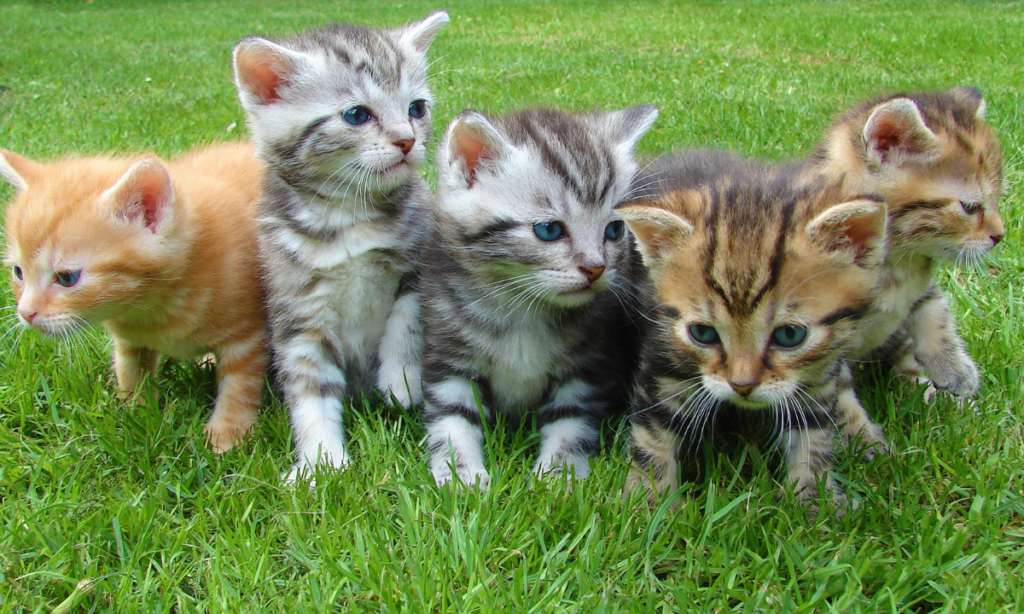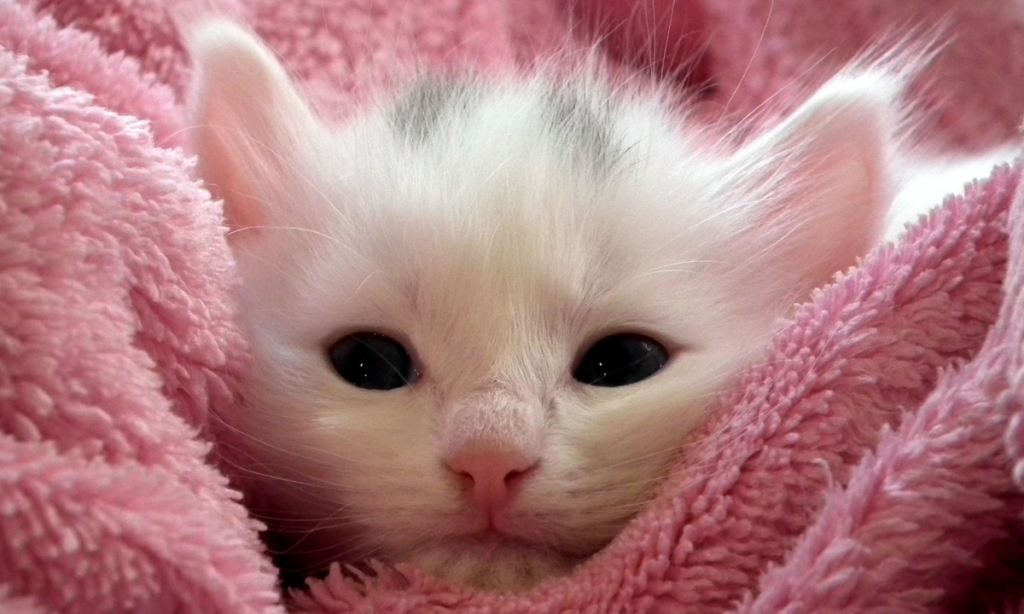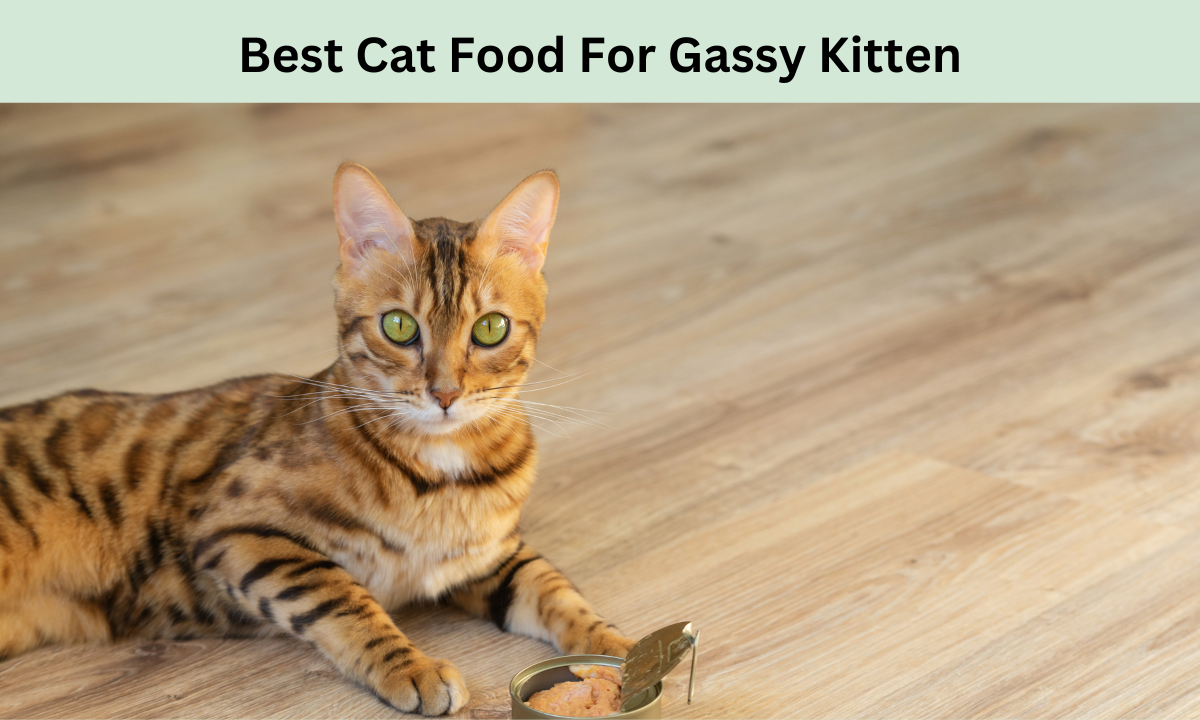Kittens can sometimes experience digestive issues like gas, which may cause discomfort. In this blog, I will discuss various best cat food for gassy kitten options that are easy to digest and can help reduce gas in kittens. I will cover important factors to consider while choosing the best cat food for gassy kitten and recommend some specific brands. I will also share tips on how to feed kittens to keep their tummy happy. By the end, you will have a good understanding of what to feed your gassy kitten.
Causes of Gas in Kittens
Kittens can experience gas due to various reasons. They are still growing, and their digestive system may not be fully developed. The milk formula they drank previously may be different than dry food. Sudden changes in diet or eating too fast can cause air to enter the stomach. Some kittens are also sensitive to certain ingredients like dairy, gluten, or high fiber content. Identifying causes will help choose an appropriate cat food.
Important Factors while choosing cat food

When looking for the best cat food for gassy kitten, the key is to choose easy-to-digest varieties. Ensure the food is highly digestible, low in fiber, gluten-free, and contains prebiotics & probiotics. Protein sources are also important – chicken, salmon, and turkey are gentle on the tummy. Canned or pate-type wet foods are easier than kibbles. Grain-free varieties may help some kittens. Check for small kibble size. Expensive does not mean the best – affordable quality brands work, too.
Recommended Cat Food Brands
Some good cat food brands offering tummy-friendly varieties for kittens include Hill’s Science Diet, which has kitten foods specially formulated for digestive health. Royal Canin has assorted dry and wet kitten foods with prebiotics. Wellness has CORE Wet Kitten Food packed with protein and easy-to-digest carbs. Purina ONE has a Natural Kitten Formula with probiotics. Blue Buffalo has Wilderness Kitten Food made with salmon, oats, and prebiotics. Iams offers Proactive Health Kitten wet food pouches. These brands focus on digestibility to keep kitten’s gases at bay.
Tips for Feeding Gassy Kittens|How To Choose Best Cat Food For Gassy Kitten?
In addition to the best cat food for gassy kitten, follow some tips for feeding gassy kittens:
- Feed small, frequent meals throughout the day instead of large portions.
- Avoid activity before and after meals so digestion is not disturbed.
- Use interactive toys for playtime instead of excessive running.
- Feed in a quiet environment with no other pets around.
- Add some boiled chicken or pumpkin to cat food for extra fiber and ease digestion. Use a cat water fountain for higher water intake.
- Keep an eye out if stress or litter type could be an issue. Be patient, as it takes time for their system to adjust to new food. Consistency works better than frequent changes.
Some Home Remedies

While proper diet management is key, here are some home remedies that may temporarily ease gas pains in kittens:
- Gently massage their belly in a clockwise motion. Use silvervine, fennel, or ginger supplements added to food – these have carminative effects to reduce gas.
- Avoid using slippery elm powder directly, as it could cause choking.
- Offer a small amount of yogurt containing probiotics. Make a bed with heated water bottles covered in the towel for warmth on the tummy.
- Play calming music for relaxation.
- Consult a vet for recommended dosages of simethicone or probiotic supplements as needed. Be watchful of any other health issues requiring attention.
Protein sources for sensitive tummies
The protein source is important when choosing food for gassy kittens. Many kittens show sensitivity to cow’s milk. Besides chicken, fish like salmon sardines are gentle and easy to digest. Turkey and lamb are other good options. Plant-based proteins can work, too, but check the quality since plant proteins alone may not suffice for kittens’ nutritional needs. Look for single-source proteins rather than meat/plant blends. Discourage table scraps as their tiny bodies may find it hard to digest other meats easily.
Canned vs dry food – What Is The Best Cat Food For Gassy Kitten?
Both canned and dry foods have pros and cons. Canned or pate types are easily digestible as kittens since they are soft and moisture-rich. However, feeding only canned foods is not suitable due to their cost and spoilage risk. Dry kibble is affordable, but some kittens can’t chew and digest it easily. A mix of both works well – start them on canned and gradually include dampened dry kibble once their tummies feel comfortable with it. Check for small kibble pieces specifically meant for kittens.
Food sensitivities in kittens
Some common food sensitivities in kittens include dairy, wheat, soy, and corn. Dairy products can cause gas, diarrhea, or vomiting. Kittens often outgrow dairy sensitivity by adulthood. Wheat, corn, and soy are vegetables that are difficult to digest for some young cats. Look for labels saying ‘grain-free’ or ‘corn-free’ to avoid these ingredients. Instead, healthier carbs from potatoes and peas are easier on tummies. Always check ingredients diligently for any food your kitten could be sensitive to.
Best feeding routine
Feeding small frequent meals throughout the day is always better than overfeeding. Divide total daily portions into four meals if the kitten is under six months old and into three meals if over six months. Clean water should be accessible at all times. Try not to feed before/after playtime to avoid exercise impacting digestion. Leave some treats for meal times only rather than leaving food always available. This helps their bodies get used to a fixed feeding schedule and aids digestion.
Kitten growth stages and diet
Kitten’s needs change as they grow through different life stages. For nursing kittens under four weeks, mother’s milk is ideal. Kittens being weaned need formula milk. Kittens from 4 weeks to 6 months need food catering to growth needs with higher calories and moisture. From 6 months to 1 year, focus on muscle growth with ample proteins. From 1 year, they attain adulthood, and the focus shifts to maintenance of lean muscle mass. Knowing kitten stages and adjusting diet accordingly is important.
Socializing tips for fussy eaters
Some kittens are naturally fussy eaters. To get them comfortable with new food:
- Hand-feed them small pieces first and let them approach and sniff them on their terms.
- Add water or warmed broth to dampen dry kibbles. Mix favorite or familiar wet food with new one.
- Serve in small portions to avoid wastage of uneaten food. Be patient and give 15 minutes only for meal time.
- Play with or praise them for trying the food. Avoid scolding, as it can worsen pickiness.
- With time and consistency, they usually adjust and accept new food varieties.
Conclusion
I hope this blog helped you understand how to choose the best cat food for gassy kitten needs. Starting with easily digestible varieties containing prebiotics, probiotics, and healthy proteins helps settle their sensitive tummies. Along with a proper diet, feeding techniques, and some home remedies, if needed, you can effectively manage gas issues. Always consult your vet in case of persistent symptoms. With time and consistency, kittens grow out of such digestive concerns. I wish you lots of purrs and playtime with your furkid! Let me know if you need any other information.
Frequently Asked Questions (FAQs)
My kitten keeps having smelly farts, what can I do?
Changing cat food may help. Choose low-fiber wet or dry food meant for kittens with easy-to-digest proteins. Feed smaller portions more frequently. Add probiotic supplements after vet approval. Seek vet advice if issues persist. Some home remedies like massages can temporarily relieve gas until dietary management kicks in.
Is it okay to give my kitten table scraps?
While kittens love tasting human food, it’s best avoided. Scraps have spices & ingredients our furry friends may find it tough to digest. Their tiny tummy and liver may struggle to break it down. Instead, stick to high-quality cat food tailored to meet their protein, calorie, and other nutritional needs for healthy growth. Occasional licks of boiled chicken won’t harm.
How long will my kitten’s sensitive stomach last?
Most kittens outgrow their sensitive tummies by 8-10 months as their bodies grow. Feeding appropriate kitten food, keeping other stress low, and regularly deworming aids in faster recovery. Till then, one needs patience and consistency while finding the right balance of food and feeding techniques for a happy kitty. Provide extra comfort during gas episodes, knowing it is usually a passing phase.
When should I switch my kitten’s diet?
Switch gently towards six months when they near adulthood. From 4 wet to soft dry mixing, increase fiber/protein gradually over weeks. Monitor stool and appetite closely for signs of distress. Abrupt changes can upset their tummy, so switch slowly across brands/types. Stick to the same routine and give plenty of water. Consult the vet if switching doesn’t go smoothly due to their growing bodies needing delicate handling during changes.
Also read


